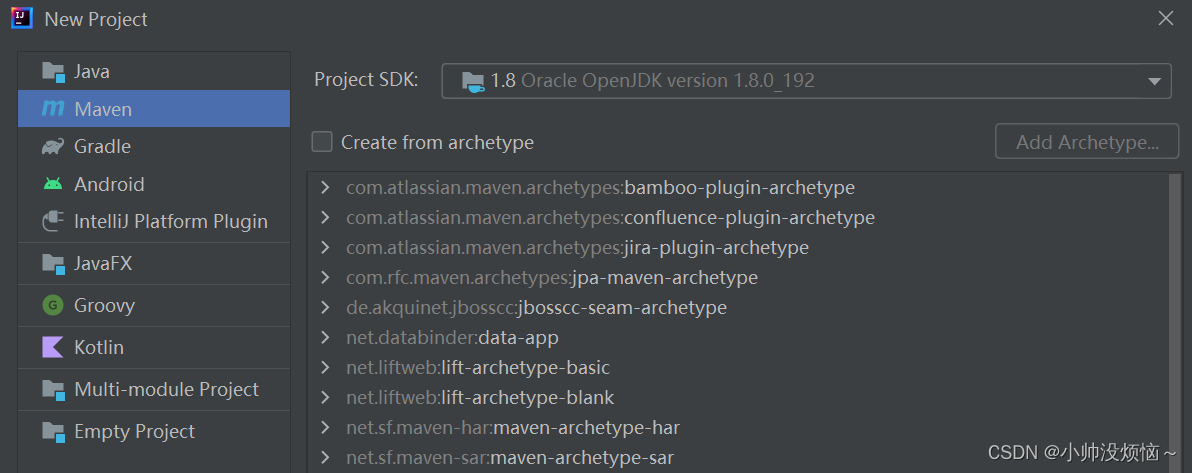UUID(Universally Unique Identifier)是一种标识符,用于在计算机系统中唯一标识实体。它是由128位的数字组成,通常以32个十六进制数的形式表示,中间使用连字符分隔。
UUID的生成是基于各种因素,如时间戳、计算机的MAC地址等。由于这些因素的结合是高度唯一且随机的,因此UUID可以被广泛应用于需要唯一标识的场景。
UUID有多个版本,其中最常见的是基于时间戳的版本(Version 1)和随机生成的版本(Version 4)。不同版本的UUID在生成方式和唯一性保证上有所差异。
在编程中,UUID经常用于生成全局唯一的标识符,例如数据库表的主键、分布式系统的消息 ID、会话标识等。通过使用UUID,可以避免在分布式环境中出现重复标识的风险。
以下为UUID方法:
package com.muyuan.common.utils.uuid;
//记得更改包名
import java.security.MessageDigest;
import java.security.NoSuchAlgorithmException;
import java.security.SecureRandom;
import java.util.Random;
import java.util.concurrent.ThreadLocalRandom;
import com.muyuan.common.exception.UtilException;
/**
* 提供通用唯一识别码(universally unique identifier)(UUID)实现
*
*
*/
public final class UUID implements java.io.Serializable, Comparable<UUID>
{
private static final long serialVersionUID = -1185015143654744140L;
/**
* SecureRandom 的单例
*
*/
private static class Holder
{
static final SecureRandom numberGenerator = getSecureRandom();
}
/** 此UUID的最高64有效位 */
private final long mostSigBits;
/** 此UUID的最低64有效位 */
private final long leastSigBits;
/**
* 私有构造
*
* @param data 数据
*/
private UUID(byte[] data)
{
long msb = 0;
long lsb = 0;
assert data.length == 16 : "data must be 16 bytes in length";
for (int i = 0; i < 8; i++)
{
msb = (msb << 8) | (data[i] & 0xff);
}
for (int i = 8; i < 16; i++)
{
lsb = (lsb << 8) | (data[i] & 0xff);
}
this.mostSigBits = msb;
this.leastSigBits = lsb;
}
/**
* 使用指定的数据构造新的 UUID。
*
* @param mostSigBits 用于 {@code UUID} 的最高有效 64 位
* @param leastSigBits 用于 {@code UUID} 的最低有效 64 位
*/
public UUID(long mostSigBits, long leastSigBits)
{
this.mostSigBits = mostSigBits;
this.leastSigBits = leastSigBits;
}
/**
* 获取类型 4(伪随机生成的)UUID 的静态工厂。 使用加密的本地线程伪随机数生成器生成该 UUID。
*
* @return 随机生成的 {@code UUID}
*/
public static UUID fastUUID()
{
return randomUUID(false);
}
/**
* 获取类型 4(伪随机生成的)UUID 的静态工厂。 使用加密的强伪随机数生成器生成该 UUID。
*
* @return 随机生成的 {@code UUID}
*/
public static UUID randomUUID()
{
return randomUUID(true);
}
/**
* 获取类型 4(伪随机生成的)UUID 的静态工厂。 使用加密的强伪随机数生成器生成该 UUID。
*
* @param isSecure 是否使用{@link SecureRandom}如果是可以获得更安全的随机码,否则可以得到更好的性能
* @return 随机生成的 {@code UUID}
*/
public static UUID randomUUID(boolean isSecure)
{
final Random ng = isSecure ? Holder.numberGenerator : getRandom();
byte[] randomBytes = new byte[16];
ng.nextBytes(randomBytes);
randomBytes[6] &= 0x0f; /* clear version */
randomBytes[6] |= 0x40; /* set to version 4 */
randomBytes[8] &= 0x3f; /* clear variant */
randomBytes[8] |= 0x80; /* set to IETF variant */
return new UUID(randomBytes);
}
/**
* 根据指定的字节数组获取类型 3(基于名称的)UUID 的静态工厂。
*
* @param name 用于构造 UUID 的字节数组。
*
* @return 根据指定数组生成的 {@code UUID}
*/
public static UUID nameUUIDFromBytes(byte[] name)
{
MessageDigest md;
try
{
md = MessageDigest.getInstance("MD5");
}
catch (NoSuchAlgorithmException nsae)
{
throw new InternalError("MD5 not supported");
}
byte[] md5Bytes = md.digest(name);
md5Bytes[6] &= 0x0f; /* clear version */
md5Bytes[6] |= 0x30; /* set to version 3 */
md5Bytes[8] &= 0x3f; /* clear variant */
md5Bytes[8] |= 0x80; /* set to IETF variant */
return new UUID(md5Bytes);
}
/**
* 根据 {@link #toString()} 方法中描述的字符串标准表示形式创建{@code UUID}。
*
* @param name 指定 {@code UUID} 字符串
* @return 具有指定值的 {@code UUID}
* @throws IllegalArgumentException 如果 name 与 {@link #toString} 中描述的字符串表示形式不符抛出此异常
*
*/
public static UUID fromString(String name)
{
String[] components = name.split("-");
if (components.length != 5)
{
throw new IllegalArgumentException("Invalid UUID string: " + name);
}
for (int i = 0; i < 5; i++)
{
components[i] = "0x" + components[i];
}
long mostSigBits = Long.decode(components[0]).longValue();
mostSigBits <<= 16;
mostSigBits |= Long.decode(components[1]).longValue();
mostSigBits <<= 16;
mostSigBits |= Long.decode(components[2]).longValue();
long leastSigBits = Long.decode(components[3]).longValue();
leastSigBits <<= 48;
leastSigBits |= Long.decode(components[4]).longValue();
return new UUID(mostSigBits, leastSigBits);
}
/**
* 返回此 UUID 的 128 位值中的最低有效 64 位。
*
* @return 此 UUID 的 128 位值中的最低有效 64 位。
*/
public long getLeastSignificantBits()
{
return leastSigBits;
}
/**
* 返回此 UUID 的 128 位值中的最高有效 64 位。
*
* @return 此 UUID 的 128 位值中最高有效 64 位。
*/
public long getMostSignificantBits()
{
return mostSigBits;
}
/**
* 与此 {@code UUID} 相关联的版本号. 版本号描述此 {@code UUID} 是如何生成的。
* <p>
* 版本号具有以下含意:
* <ul>
* <li>1 基于时间的 UUID
* <li>2 DCE 安全 UUID
* <li>3 基于名称的 UUID
* <li>4 随机生成的 UUID
* </ul>
*
* @return 此 {@code UUID} 的版本号
*/
public int version()
{
// Version is bits masked by 0x000000000000F000 in MS long
return (int) ((mostSigBits >> 12) & 0x0f);
}
/**
* 与此 {@code UUID} 相关联的变体号。变体号描述 {@code UUID} 的布局。
* <p>
* 变体号具有以下含意:
* <ul>
* <li>0 为 NCS 向后兼容保留
* <li>2 <a href="http://www.ietf.org/rfc/rfc4122.txt">IETF&nbsp;RFC&nbsp;4122</a>(Leach-Salz), 用于此类
* <li>6 保留,微软向后兼容
* <li>7 保留供以后定义使用
* </ul>
*
* @return 此 {@code UUID} 相关联的变体号
*/
public int variant()
{
// This field is composed of a varying number of bits.
// 0 - - Reserved for NCS backward compatibility
// 1 0 - The IETF aka Leach-Salz variant (used by this class)
// 1 1 0 Reserved, Microsoft backward compatibility
// 1 1 1 Reserved for future definition.
return (int) ((leastSigBits >>> (64 - (leastSigBits >>> 62))) & (leastSigBits >> 63));
}
/**
* 与此 UUID 相关联的时间戳值。
*
* <p>
* 60 位的时间戳值根据此 {@code UUID} 的 time_low、time_mid 和 time_hi 字段构造。<br>
* 所得到的时间戳以 100 毫微秒为单位,从 UTC(通用协调时间) 1582 年 10 月 15 日零时开始。
*
* <p>
* 时间戳值仅在在基于时间的 UUID(其 version 类型为 1)中才有意义。<br>
* 如果此 {@code UUID} 不是基于时间的 UUID,则此方法抛出 UnsupportedOperationException。
*
* @throws UnsupportedOperationException 如果此 {@code UUID} 不是 version 为 1 的 UUID。
*/
public long timestamp() throws UnsupportedOperationException
{
checkTimeBase();
return (mostSigBits & 0x0FFFL) << 48//
| ((mostSigBits >> 16) & 0x0FFFFL) << 32//
| mostSigBits >>> 32;
}
/**
* 与此 UUID 相关联的时钟序列值。
*
* <p>
* 14 位的时钟序列值根据此 UUID 的 clock_seq 字段构造。clock_seq 字段用于保证在基于时间的 UUID 中的时间唯一性。
* <p>
* {@code clockSequence} 值仅在基于时间的 UUID(其 version 类型为 1)中才有意义。 如果此 UUID 不是基于时间的 UUID,则此方法抛出
* UnsupportedOperationException。
*
* @return 此 {@code UUID} 的时钟序列
*
* @throws UnsupportedOperationException 如果此 UUID 的 version 不为 1
*/
public int clockSequence() throws UnsupportedOperationException
{
checkTimeBase();
return (int) ((leastSigBits & 0x3FFF000000000000L) >>> 48);
}
/**
* 与此 UUID 相关的节点值。
*
* <p>
* 48 位的节点值根据此 UUID 的 node 字段构造。此字段旨在用于保存机器的 IEEE 802 地址,该地址用于生成此 UUID 以保证空间唯一性。
* <p>
* 节点值仅在基于时间的 UUID(其 version 类型为 1)中才有意义。<br>
* 如果此 UUID 不是基于时间的 UUID,则此方法抛出 UnsupportedOperationException。
*
* @return 此 {@code UUID} 的节点值
*
* @throws UnsupportedOperationException 如果此 UUID 的 version 不为 1
*/
public long node() throws UnsupportedOperationException
{
checkTimeBase();
return leastSigBits & 0x0000FFFFFFFFFFFFL;
}
/**
* 返回此{@code UUID} 的字符串表现形式。
*
* <p>
* UUID 的字符串表示形式由此 BNF 描述:
*
* <pre>
* {@code
* UUID = <time_low>-<time_mid>-<time_high_and_version>-<variant_and_sequence>-<node>
* time_low = 4*<hexOctet>
* time_mid = 2*<hexOctet>
* time_high_and_version = 2*<hexOctet>
* variant_and_sequence = 2*<hexOctet>
* node = 6*<hexOctet>
* hexOctet = <hexDigit><hexDigit>
* hexDigit = [0-9a-fA-F]
* }
* </pre>
*
* </blockquote>
*
* @return 此{@code UUID} 的字符串表现形式
* @see #toString(boolean)
*/
@Override
public String toString()
{
return toString(false);
}
/**
* 返回此{@code UUID} 的字符串表现形式。
*
* <p>
* UUID 的字符串表示形式由此 BNF 描述:
*
* <pre>
* {@code
* UUID = <time_low>-<time_mid>-<time_high_and_version>-<variant_and_sequence>-<node>
* time_low = 4*<hexOctet>
* time_mid = 2*<hexOctet>
* time_high_and_version = 2*<hexOctet>
* variant_and_sequence = 2*<hexOctet>
* node = 6*<hexOctet>
* hexOctet = <hexDigit><hexDigit>
* hexDigit = [0-9a-fA-F]
* }
* </pre>
*
* </blockquote>
*
* @param isSimple 是否简单模式,简单模式为不带'-'的UUID字符串
* @return 此{@code UUID} 的字符串表现形式
*/
public String toString(boolean isSimple)
{
final StringBuilder builder = new StringBuilder(isSimple ? 32 : 36);
// time_low
builder.append(digits(mostSigBits >> 32, 8));
if (false == isSimple)
{
builder.append('-');
}
// time_mid
builder.append(digits(mostSigBits >> 16, 4));
if (false == isSimple)
{
builder.append('-');
}
// time_high_and_version
builder.append(digits(mostSigBits, 4));
if (false == isSimple)
{
builder.append('-');
}
// variant_and_sequence
builder.append(digits(leastSigBits >> 48, 4));
if (false == isSimple)
{
builder.append('-');
}
// node
builder.append(digits(leastSigBits, 12));
return builder.toString();
}
/**
* 返回此 UUID 的哈希码。
*
* @return UUID 的哈希码值。
*/
@Override
public int hashCode()
{
long hilo = mostSigBits ^ leastSigBits;
return ((int) (hilo >> 32)) ^ (int) hilo;
}
/**
* 将此对象与指定对象比较。
* <p>
* 当且仅当参数不为 {@code null}、而是一个 UUID 对象、具有与此 UUID 相同的 varriant、包含相同的值(每一位均相同)时,结果才为 {@code true}。
*
* @param obj 要与之比较的对象
*
* @return 如果对象相同,则返回 {@code true};否则返回 {@code false}
*/
@Override
public boolean equals(Object obj)
{
if ((null == obj) || (obj.getClass() != UUID.class))
{
return false;
}
UUID id = (UUID) obj;
return (mostSigBits == id.mostSigBits && leastSigBits == id.leastSigBits);
}
// Comparison Operations
/**
* 将此 UUID 与指定的 UUID 比较。
*
* <p>
* 如果两个 UUID 不同,且第一个 UUID 的最高有效字段大于第二个 UUID 的对应字段,则第一个 UUID 大于第二个 UUID。
*
* @param val 与此 UUID 比较的 UUID
*
* @return 在此 UUID 小于、等于或大于 val 时,分别返回 -1、0 或 1。
*
*/
@Override
public int compareTo(UUID val)
{
// The ordering is intentionally set up so that the UUIDs
// can simply be numerically compared as two numbers
return (this.mostSigBits < val.mostSigBits ? -1 : //
(this.mostSigBits > val.mostSigBits ? 1 : //
(this.leastSigBits < val.leastSigBits ? -1 : //
(this.leastSigBits > val.leastSigBits ? 1 : //
0))));
}
// -------------------------------------------------------------------------------------------------------------------
// Private method start
/**
* 返回指定数字对应的hex值
*
* @param val 值
* @param digits 位
* @return 值
*/
private static String digits(long val, int digits)
{
long hi = 1L << (digits * 4);
return Long.toHexString(hi | (val & (hi - 1))).substring(1);
}
/**
* 检查是否为time-based版本UUID
*/
private void checkTimeBase()
{
if (version() != 1)
{
throw new UnsupportedOperationException("Not a time-based UUID");
}
}
/**
* 获取{@link SecureRandom},类提供加密的强随机数生成器 (RNG)
*
* @return {@link SecureRandom}
*/
public static SecureRandom getSecureRandom()
{
try
{
return SecureRandom.getInstance("SHA1PRNG");
}
catch (NoSuchAlgorithmException e)
{
throw new UtilException(e);
}
}
/**
* 获取随机数生成器对象<br>
* ThreadLocalRandom是JDK 7之后提供并发产生随机数,能够解决多个线程发生的竞争争夺。
*
* @return {@link ThreadLocalRandom}
*/
public static ThreadLocalRandom getRandom()
{
return ThreadLocalRandom.current();
}
}原文地址:https://blog.csdn.net/A2029292473/article/details/134673397
本文来自互联网用户投稿,该文观点仅代表作者本人,不代表本站立场。本站仅提供信息存储空间服务,不拥有所有权,不承担相关法律责任。
如若转载,请注明出处:http://www.7code.cn/show_36356.html
如若内容造成侵权/违法违规/事实不符,请联系代码007邮箱:suwngjj01@126.com进行投诉反馈,一经查实,立即删除!
主题授权提示:请在后台主题设置-主题授权-激活主题的正版授权,授权购买:RiTheme官网
声明:本站所有文章,如无特殊说明或标注,均为本站原创发布。任何个人或组织,在未征得本站同意时,禁止复制、盗用、采集、发布本站内容到任何网站、书籍等各类媒体平台。如若本站内容侵犯了原著者的合法权益,可联系我们进行处理。








